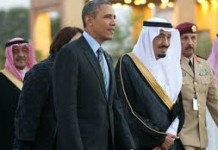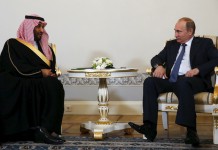Context
.jpg)
The attack in the Mohmand Agency of Federally Administered Tribal Areas (FATA) on July 9, 2010, claimed the lives of about 106 people, majority of them ordinary civilians. Pakistan military had previously claimed to cleanse the area of the Taliban and extremists. However, a series of recent terrorist events indicate the tide may be turning once again. This analysis examines where the planning for the recent attacks may have taken place. Additionally, inferences have also been drawn regarding the terrorist strategy for FATA and its connection to Afghanistan.
Analysis
Planning for the Attack

The spokesman for the Mohmand Chapter of Tehreek-e-Taliban Pakistan, Ikramullah Mohmand, subsequently accepted responsibility for the July 9th attack. In September 2009, Pakistani security forces claimed to have cleared insurgents from 80 percent of Mohmand, the exception being militant strongholds near the Afghan border. PoliTact sources in the area have previously confirmed reports of Taliban comeback and regrouping of the insurgents in Mohmand and the surrounding areas.
The Governor of Khyber-Pukhtunkhwa, Owais Ghani, and the federal minister of interior, Rehman Malik, have both claimed the planning for Mohmand attack was made across the border in Afghanistan. It is important to note that for the June 13, 2010 attack on the Frontier Corps check post in Mohmand, Afghan Taliban were reportedly blamed. The attack resulted in the death of 7 soldiers and the abduction of about 35. PoliTact sources in Mohmand and Afghanistan further inform that TTP has been able to establish strong sanctuaries in the Kunar province of Afghanistan, and TTP was the main culprit responsible for the attack on the Frontier Corps check post, and not the Afghan Taliban.
The US forces had moved out of Kunar province last year due to rapidly deteriorating security situation, which resulted in an attack on one of its bases in January 2009 causing 13 American casualties. By the time Pakistan Army launched (April-May 2009) an operation in Swat-Dir, according to media reports many Taliban were able to escape to the adjoining Kunar province. This was mainly due to the vacuum that developed as the Americans withdrew from Kunar. Kunar and Nuristan province of Afghanistan have now become Al Qaeda and Taliban havens. Nevertheless, it’s is ironical to see Afghanistan becoming ‘strategic depth’ for Pakistan based insurgents.

Terrorist Tactics and Strategy
According to TTP spokesman the reason for attacking the offices of the political administration in Ekka Ghund, Mohmand Agency, was to target the tribal elders of Ambar area, who had gathered there to discuss the formation of anti-Taliban Lashkar.
Taliban has maintained an absolute control of Ambar, Khawezai-Baizai and Lakaro areas of the Mohmand Agency, and they do not want to see local resistance challenge their influence or set a model for other areas. The kind of attack carried out in Mohmand is central to TTP strategy in FATA and the settled districts of Khyber Pukhtunkhwa. Wherever local people were able to raise a force against the Taliban, they have been repeatedly targeted by Taliban with deadly results. Similar attacks have previously occurred in South Waziristan, Orakzai Agency, Kurram Agency, Darra Adam Khel, Bajaur Agency, Swat and Lakki Marwat.
As a counter strategy, the government and the security forces have stressed the importance of formulating local armed resistance to Taliban. However, authorities have not extended consisted support to local resistance and lashkars and as a result tribesman have suffered numerous casualties, not to mention the loss of morale. Obviously the primary responsibility of providing security to the people is of the state and government not the other way around.
Implications for Pakistan and Afghanistan
Now that the Taliban have effectively targeted the efforts to raise local armed resistance against them in Mohmand and other areas of tribal areas, they feel emboldened. Taliban foresee a real opportunity to not only make a comeback in Mohmand but also in Bajaur, and possibly in Swat. If they were to be successful in these attempts, it would represent a tremendous setback to the long-term success of the counter-terrorism operations in these areas.
Such a negative development in FATA would also not bode well for the new domestic village forces created in Afghanistan. If not managed diligently, these measures could become the setting stones for the initiation of civil war in Afghanistan. In Pakistan, it would represent the repetition of a vicious cycle; Taliban moving from areas where they are under pressure to the low-pressure areas. Additionally, it would undermine the control the security forces have been able to maintain in recent months, in the southern tribal areas of South Waziristan, Orakzai and Kurram. Consequently, militants would probably move from these stress points to northern tribal regions of Mohmand, Bajaur and Dir-Swat. The Taliban have reportedly already moved in large numbers to the hitherto stable Khyber Agency.
The resurgence of militants in Mohmand, Bajaur and Khyber Agency is also going to endanger the security of Peshawar yet again. Ekka Ghund in Mohmand is just 45 minutes of drive from Peshawar. Militants have long aspired to create extensive destruction in the capital of Khyber Pukhtunkhwa, as Peshawar carries enormous symbolic and strategic significance. Put together, the strategies of TTP and Punjabi Taliban represent deadly and far-reaching consequence for Pakistan, if these are not offset immediately. Punjabi Taliban are making every attempt to open Barelvi and Deobandi rift (Data Darbar attack) in Punjab and create sectarian tensions in the country. However, Pakistan government presently appears inclined to do deal with TTP and Punjabi Taliban separately and using different tactics and strategies.
Tell Us What You Think




